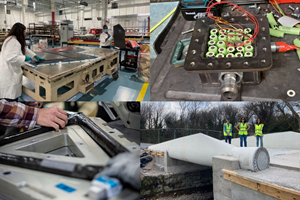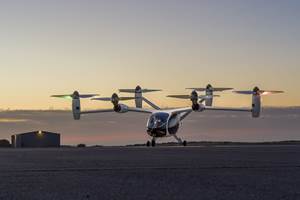A hand for the next generation
CW Editor-in-chief Jeff Sloan advocates educating the next generation on all levels of future career opportunities — especially in composites.
My wife is a high school history teacher (U.S. history) who is highly engaged with her students. One of the things she likes to do is organize out-of-school trips to explore local and regional history, and it’s not unusual for me to tag along and provide chaperone and general spousal support services, particularly if the group of students is large.
Whenever possible, I like to talk to these students about their interests, likes, dislikes, extracurricular activities, etc. As you can imagine, and as you probably know, the younger the student is, the less concrete and formed the answers to these questions are. By the time these students hit senior year, however, thoughts about life beyond high school become much more real and urgent. Campuses are visited, colleges are applied to, scholarships are pursued. All of this activity comes to a head in late April/early May as students make their final decisions about where they will go. It’s a tense time, with many students balancing the prospect of attending their “dream” school against the reality of the cost of that dream.
During this time of year, I am particularly evangelical about the composites industry. If I learn that one of my wife’s students has an interest in science or engineering, I will make an effort to give him or her a speech about the great potential of composite materials and manufacturing and encourage pursuit of a career in this industry. To paraphrase: “I have just one word to say to you: Composites.” I then launch into my elevator pitch about composites use in aircraft, spacecraft, cars and trucks, wind turbines, sporting goods, etc. “The future is bright!,” I say. I figure that on a very good day, about 10% of what I say to these students is absorbed, with an even smaller chance that my advice will lead to action. On a typical day, I figure these students think I’m a little crazy. “Sure, Mr. Sloan.”
This is an odd time in the life of an 18-year-old. Legally, these graduating seniors are adults, in the eyes of the world capable of making their own decisions and leading their own lives without parental supervision. The truth, however, is that they are still kids, susceptible to the kind of impulsive, rash, uninformed decision-making that begs for parental guidance. Still, when it comes to sending our kids to college, we expect them to have a crystal clear sense of the major they want to pursue and, by extension, the career they will have. This is not a reasonable expectation.
If you could talk to your high school self today, what would he or she tell you about his or her interests, abilities or understanding of the working world? What did you think your path would be? Did you know then what it meant to be an operator, engineer, quality control manager, operations manager, vice president, owner, entrepreneur or designer? Did you even imagine that you would be working in an industry that makes composite parts and structures? What, ultimately, was the path that brought you to where you are?
Possibly one of the best things we can do for students like my wife’s, before we launch them into the abyss that is the college experience, is to first help them see that there is not one post-high school path, but myriad paths, many of which don’t pass anywhere near a college campus. Second, we should, when possible, give them a chance to experience an actual professional work environment, to understand what it means to be an operator, engineer, designer or vice president — or nurse or attorney or journalist, for that matter. We want, ultimately, students to come to their avocations — to the composites industry — as informed as possible about the environment they are entering. And we want them to come because they see for themselves the opportunities and challenges that this industry has to offer — not just because Mr. Sloan said so.
Related Content
How has CW changed in the last year?
Upon his one-year anniversary as editor-in-chief of CW, Scott Francis looks back at some of the brand’s changes and hints at where it might be heading next.
Read MoreYour must-have composites industry guide for 2025
Welcome to CW’s annual SourceBook, your guide to suppliers of machinery, materials, software and other services for the composites industry.
Read MoreAs 2023 begins, a look back at trending CW topics in 2022
With 2022 now behind us, CW’s editor-in-chief Jeff Sloan takes a look at the CW stories last year that received the most reader attention.
Read MoreHow composites have become a necessity
Composites used to be one of many material options across industries and applications, but that's not the case anymore.
Read MoreRead Next
Plant tour: Daher Shap’in TechCenter and composites production plant, Saint-Aignan-de-Grandlieu, France
Co-located R&D and production advance OOA thermosets, thermoplastics, welding, recycling and digital technologies for faster processing and certification of lighter, more sustainable composites.
Read MoreDeveloping bonded composite repair for ships, offshore units
Bureau Veritas and industry partners issue guidelines and pave the way for certification via StrengthBond Offshore project.
Read MoreVIDEO: High-volume processing for fiberglass components
Cannon Ergos, a company specializing in high-ton presses and equipment for composites fabrication and plastics processing, displayed automotive and industrial components at CAMX 2024.
Read More





















